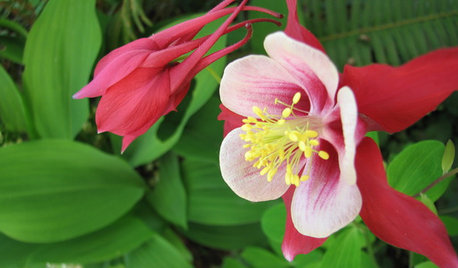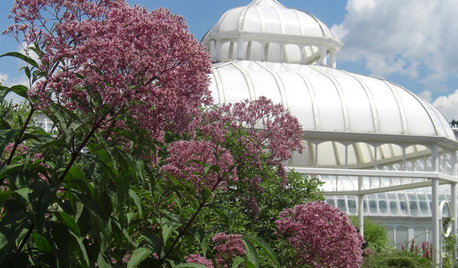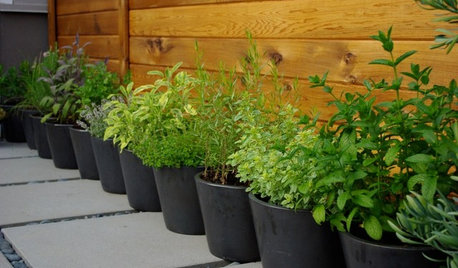Weeds growing instead of plants
wanitto
10 years ago
Related Stories

GARDENING GUIDESGreat Design Plant: Bugle Weed, a Quick Ground Cover
It’s highly adaptable, suppresses weeds, reduces erosion and provide weeks of bright flowers. Just watch for invasiveness
Full Story
GARDENING GUIDESTackle Weeds the Natural Way
Instead of dousing your yard with chemicals to wipe out weeds, let time and nature work their magic via smothering and solarization
Full Story
GARDENING GUIDESGrow Your Own Privacy: How to Screen With Plants and Trees
Use living walls to lower your home and garden's exposure while boosting natural beauty in your landscape
Full Story
GARDENING FOR BUTTERFLIESGreat Design Plant: Columbine Grows Happily in Shade and Sun
Its ethereal beauty comes from complex forms and wide-ranging colors, but columbine’s benefits are highly attractive too
Full Story
FLOWERSGreat Design Plant: Joe Pye Weed
This unsung beauty tolerates wet soil, provides beautiful late summer blooms and attracts butterflies and hummingbirds
Full Story
GARDENING GUIDESLet's Weed Out 4 Native Plant Myths
Plant wisely for a garden that supports pollinators and requires less work
Full Story
EDIBLE GARDENSNatural Ways to Get Rid of Weeds in Your Garden
Use these techniques to help prevent the spread of weeds and to learn about your soil
Full Story
EDIBLE GARDENSSummer Crops: How to Grow Tomatoes
Plant tomato seedlings in spring for one of the best tastes of summer, fresh from your backyard
Full Story
GARDENING GUIDES6 Ways to Grow Edibles in Small Places
No big backyard? Join in the grow-your-own fun with these small-space ideas for planting vegetables, fruits and herbs
Full Story
EDIBLE GARDENSSummer Crop: How to Grow Blueberries
Plant blueberries in spring or fall for garden beauty through three seasons — and a sweet superfood in summer
Full StoryMore Discussions




floral_uk z.8/9 SW UK
jenson315
Related Discussions
Pepper plants fruiting instead of growing
Q
What is this weed growing where I planted grass?
Q
Need help to id this plant and how to help it grow taller instead
Q
Please help, I think I'm growing weeds instead of peppers.
Q
wanittoOriginal Author
wanittoOriginal Author
wanittoOriginal Author
Tiffany, purpleinopp Z8b Opp, AL
floral_uk z.8/9 SW UK
wanittoOriginal Author
floral_uk z.8/9 SW UK
wanittoOriginal Author
floral_uk z.8/9 SW UK
pnbrown
Tiffany, purpleinopp Z8b Opp, AL
wanittoOriginal Author
wanittoOriginal Author
wanittoOriginal Author
Tiffany, purpleinopp Z8b Opp, AL
floral_uk z.8/9 SW UK
wanittoOriginal Author
floral_uk z.8/9 SW UK
melonpan
gardenper
weedsgrower
floral_uk z.8/9 SW UK
Tiffany, purpleinopp Z8b Opp, AL
wanittoOriginal Author
Tiffany, purpleinopp Z8b Opp, AL